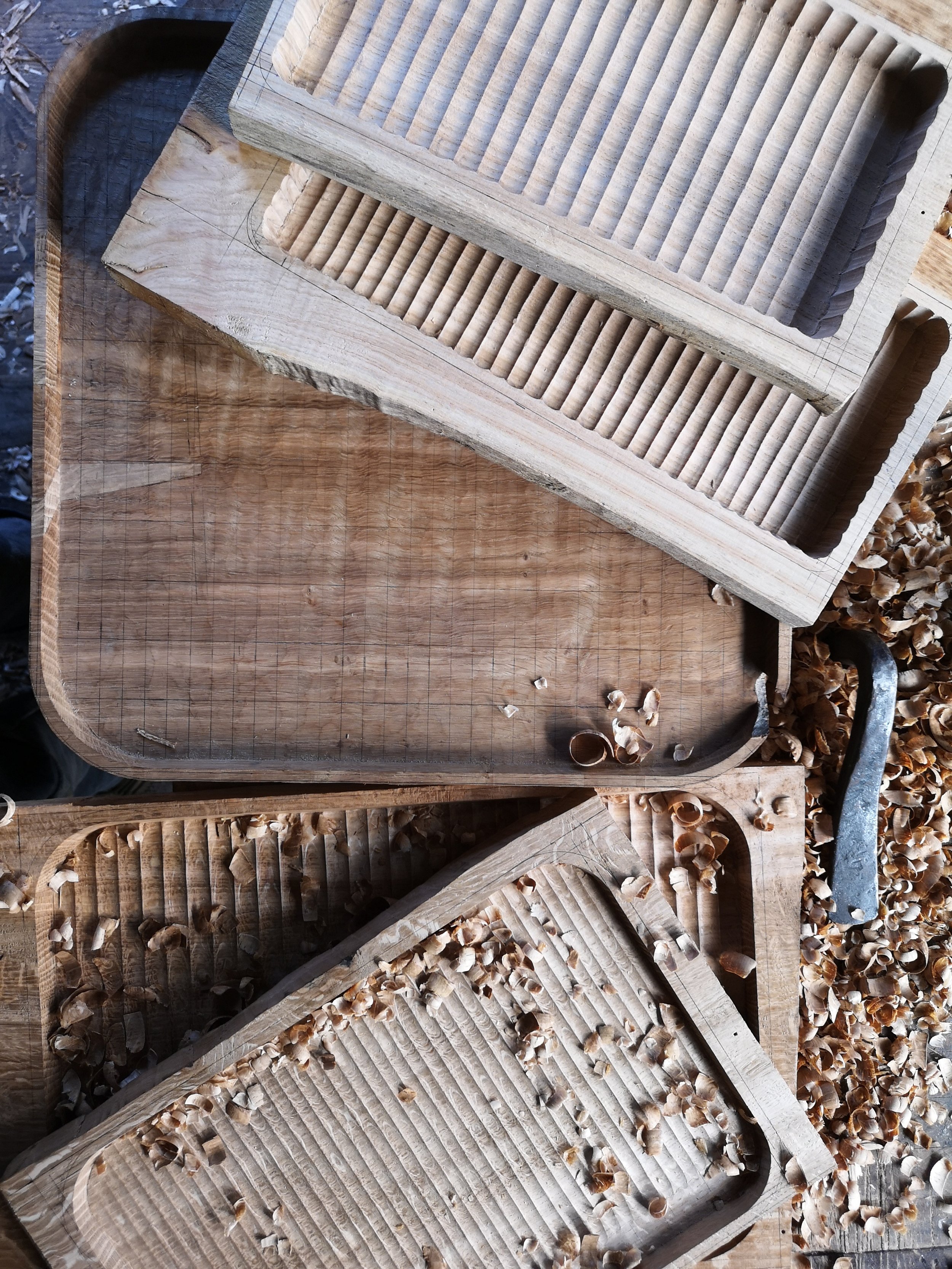
The Wagatabon
我谷盆
Wagatabon is a distinctive kind of hand carved wooden tray that was historically made by roof shingle makers in Wagatani, Ishikawa prefecture, Japan. Traditionally made from riven blanks produced from fresh chestnut logs, the wagatabon is notable for the characteristic grooves carved across the grain.
The craft is thought to date back to the early 17th century. The best roof shingle blanks of chestnut wood were set aside and carved into trays during the winter months, to be used as barter items in exchange for food and clothing. The trays were traditionally used to carry anything from bowls and plates to tobacco, sweets and small tools. Larger trays were also used to make offerings of rice to the household shrine of family ancestors. ‘Wagata’ refers to the village of Wagatani and ‘bon’ simply means tray.
The craft of carving wagatabon was almost completely lost following the flooding of Wagatani after the construction of a hydroelectric dam in the early 1960’s. Fortunately wagatabon were considered significant craft objects by the growing Mingei movement in Japan in the 60’s, and their intrinsic value as simple and beautiful everyday objects made by anonymous craftsmen was recognised. Thanks to the efforts of a few dedicated craftsmen over the following years, there are now a handful of crafts people in Japan and beyond practicing the craft.
Since first encountering these simple and beautiful objects several years ago, I have set about developing my own idiosyncratic approach to carving them using a few simple hand tools. There is a simplicity and honesty in the process that brings together the natural characteristics and beauty of the material and the zealous hand of the maker in a wonderfully harmonious way.
Wagatabon can be made with a very minimal tool set comprising just splitting wedges, chisel, gouge and mallet. There are of course a few additional tools (axe, hand planes, saw, drawknife, spokeshave etc) that can also be used to facilitate the process. I recently made a comprehensive video with Zed Outdoors documenting my process for carving wagatabon, from log to finished piece, which you can watch here.
Although I use a combination of Japanese and European tools (both old and new) to carve the trays I make, either will work perfectly well. As with most areas of woodworking, I’m an advocate for being resourceful with what you have, and using what is readily available to you. Carving wagatabon is a great way to deepen your understanding of materials and build a confident skillset using some of the most essential woodworking hand tools.
If you’re interested in learning to carve wagatabon, but don’t have the necessary tools, or are not sure what to use - I’d suggest starting with a 30 - 40mm wide firmer chisel, and a pfeil gouge (something like a 7/20 works well). Classic Hand Tools are a good source as they usually hold a large stock of these carving tools and ship worldwide.
I have taught Wagatabon carving workshops through the woodland makers workshop in Hereford as well as teaching small groups and individuals at my workshop in Norfolk. If you are interested in learning how to carve wagatabon please get in touch through the contact form below.
I regularly carve new wagatabon trays to add to my shop, and currently have a couple of examples available to purchase, which can be found here and here.







